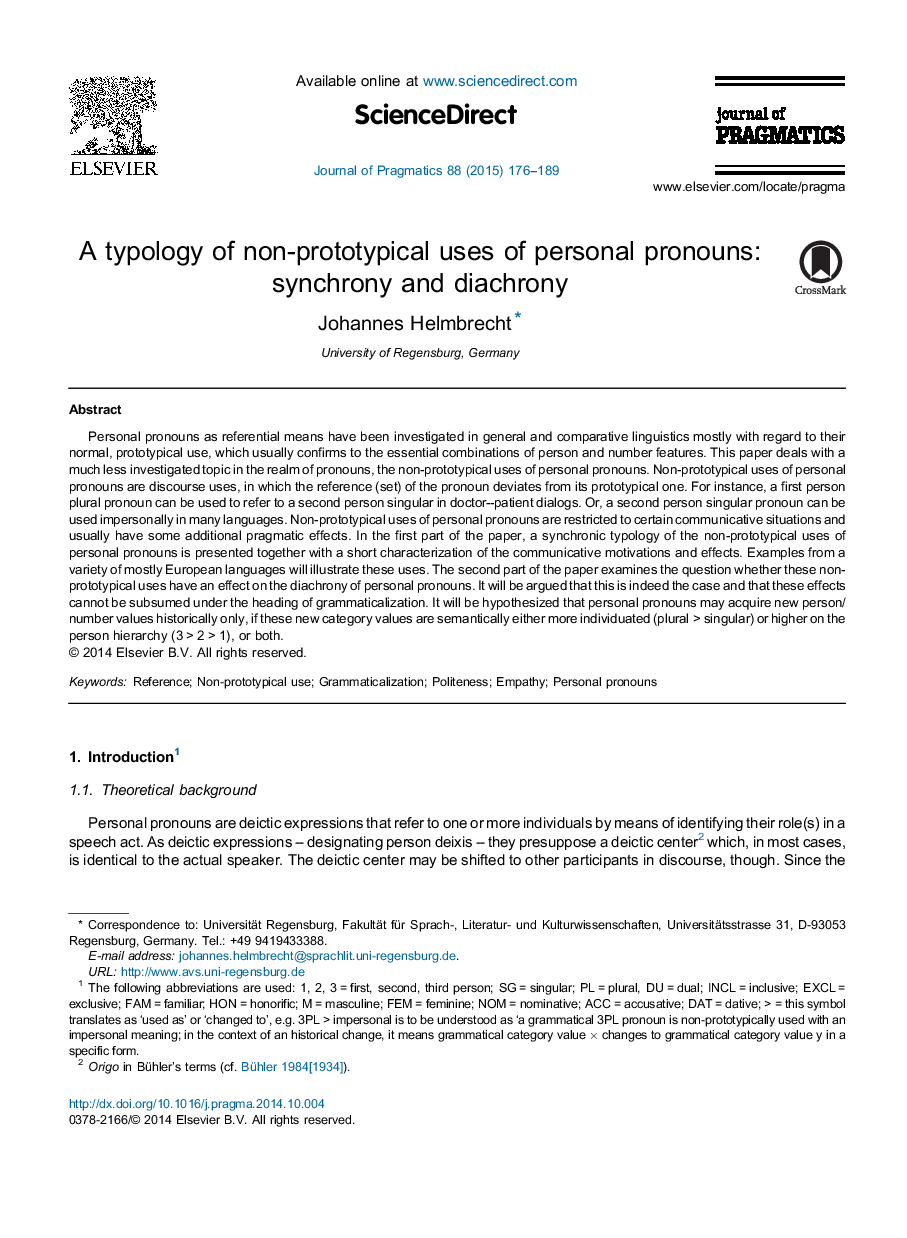| Article ID | Journal | Published Year | Pages | File Type |
|---|---|---|---|---|
| 932544 | Journal of Pragmatics | 2015 | 14 Pages |
Personal pronouns as referential means have been investigated in general and comparative linguistics mostly with regard to their normal, prototypical use, which usually confirms to the essential combinations of person and number features. This paper deals with a much less investigated topic in the realm of pronouns, the non-prototypical uses of personal pronouns. Non-prototypical uses of personal pronouns are discourse uses, in which the reference (set) of the pronoun deviates from its prototypical one. For instance, a first person plural pronoun can be used to refer to a second person singular in doctor–patient dialogs. Or, a second person singular pronoun can be used impersonally in many languages. Non-prototypical uses of personal pronouns are restricted to certain communicative situations and usually have some additional pragmatic effects. In the first part of the paper, a synchronic typology of the non-prototypical uses of personal pronouns is presented together with a short characterization of the communicative motivations and effects. Examples from a variety of mostly European languages will illustrate these uses. The second part of the paper examines the question whether these non-prototypical uses have an effect on the diachrony of personal pronouns. It will be argued that this is indeed the case and that these effects cannot be subsumed under the heading of grammaticalization. It will be hypothesized that personal pronouns may acquire new person/number values historically only, if these new category values are semantically either more individuated (plural > singular) or higher on the person hierarchy (3 > 2 > 1), or both.
